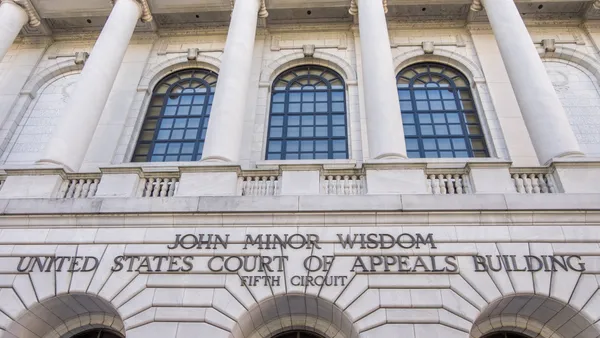Dive Brief:
- The University of Pennsylvania is not liable for sexual harassment perpetrated against a former teaching assistant and lab manager by a student because the school did not intend the harassment and could not have known that it would occur, a federal judge held Oct. 31.
- The female plaintiff in O’Neill v. Trustees of the University of Pennsylvania reported a male student’s repeated improper conduct. Penn responded by enacting a safety plan that limited contact between the two and informed the student that he could face disciplinary proceedings for violating the plan. The plaintiff refused to return to work, however, because Penn did not prohibit the student from accessing the lab in which she worked.
- The plaintiff sued, alleging hostile work environment, constructive discharge and retaliation claims. Judge Mark Kearney held that no reasonable jury could find Penn liable for the harassment. In doing so, Kearney said he was “persuaded” by a recent decision of the 6th U.S. Circuit Court of Appeals that held employers may only be liable for third-party harassment of employees if they intend for the conduct to occur.
Dive Insight:
The 6th Circuit decision in question, Bivens v. Zep, Inc., represented a shift from the standard used by most courts to evaluate workplace harassment claims under Title VII of the 1964 Civil Rights Act in which the alleged harassment is perpetrated by a non-employee.
Most circuits have followed a standard articulated by the U.S. Equal Employment Opportunity Commission that employers are liable for such harassment if they either unreasonably fail to prevent it or fail to take action in response to harassment about which they knew or should have known.
In Bivens, the 6th Circuit said it broke from this interpretation of Title VII, instead holding that employers are only liable when they intend for such harassment to occur. It further defined intent to mean that an employer either desires the unlawful consequences of alleged harassment or is “substantially certain” that the harassment will follow as a consequence of the employer’s actions.
Kearney wrote that while he found the Bivens decision persuasive, he nonetheless also applied the “knew or should have known” standard because he “[did] not discern much difference” between the two approaches. Kearney further held that he could not discern how an employer should have known about conduct by persons not under its control or authority as it does not monitor all employee interactions with third parties.
“We appreciate a university has some control over its students including through discipline which would not be true in a typical customer interaction with an employee,” Kearney said. “But the disciplinary process does not afford the university a prescient foresight to know which students may engage in sex-based harassment of its employees.”
The plaintiff in O’Neill claimed that Penn did not address the alleged hostile work environment. Kearney disagreed, noting that Penn removed the student from the lab in which the two worked together and implemented its safety plan on the same day that the plaintiff reported the harassment. Kearney found that a reasonable jury could not find the plan to be inadequate or that Penn knowingly permitted the harassment.
HR teams should take note of how Bivens could reshape employer liability for harassment by third parties, an attorney wrote in an op-ed to HR Dive last month. Although the 6th’s Circuit decision may make it more difficult for plaintiffs to succeed on such claims in some jurisdictions, the attorney noted that HR departments have a broad responsibility to prevent harassment, empower workers to report misconduct and train managers to respond consistently and appropriately to harassment.














